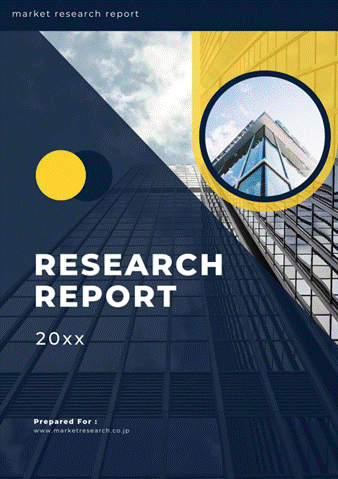 | • レポートコード:D0-MOR-AP1521 • 出版社/出版日:Mordor Intelligence / 2020年4月 • レポート形態:英文、PDF、86ページ • 納品方法:Eメール(受注後2-3営業日) • 産業分類:農業 |
| Single User | ¥481,000 (USD3,250) | ▷ お問い合わせ |
| Team User | ¥555,000 (USD3,750) | ▷ お問い合わせ |
| Corporate License | ¥962,000 (USD6,500) | ▷ お問い合わせ |
• お支払方法:銀行振込(納品後、ご請求書送付)
レポート概要
| 本調査レポートは、バイオ肥料のアメリカ市場について調査・分析した資料で、バイオ肥料の市場概要、動向、セグメント別市場規模、競争状況、企業情報、市場機会分析などで構成されています。 |
The United States Biofertilizer Market is projected to register a robust CAGR of 4.9% over the forecast period (2020-2025). American consumers are increasingly adopting organically grown agricultural produce and the strict regulations with respect to labeling of food products as “organic” is driving the market for biofertilizers.
– The area of certified field crops in the United States increased from 1.4 million acre in 2014 to 1.68 million acre in 2016. The area of certified organic fruits, tree nuts, and berries in the country increased from 71,720 acre in 2014 to 73,220 acre in 2016.
– Fresh fruits and vegetables account for the top-selling products under the organic products category. According to the Organic Trade Association, fruits and vegetables account for close to 40% of all organic food sales. Around 14% of all fruits and vegetables purchased by consumers are organic and the demand continues to increase. Rapid expansion in consumer demand provides opportunities for the United States organic producers to enter high-value markets in the country.
– There have been several provisions made by the government in order to promote organic farming in the United States. In 2017, the US Department of Agriculture launched a program to certify farmland for the growers that are in the process of switching to organic. According to the Organic Trade Association, through the certification, farmers will be able to sell products for higher prices than conventionally-grown goods
Key Market Trends
Rhizobium is the Fastest Growing Segment
With a CAGR of 5.9%, the Rhizobium is the fastest-growing microorganism segment that is utilized in biofertilizer production in the United States. Rhizobium inoculants are the best known and most exploited for their symbiotic nitrogen-fixing ability. The popular genera used are bradyrhizobium, sinorhizobium, azorhizobium, mesorhizobium, and allorhizobium. Apart from its ability to fix atmospheric nitrogen in cereals such as wheat, rice, and corn, rhizobium is increasingly used in soybeans, which is one of the most important crops in the United States. Soybean is a leguminous crop, belonging to the family Fabaceae and the influence of rhizobium on the yield of the crop is very high since the crop naturally contains root nodules that house rhizobium. Although the market for rhizobium is on the ascendancy, factors such as lower shelf life and subsequent logistical and supply chain challenges are restricting the use of the bacteria as a biofertilizer on a mass scale.
Fruits and Vegetables the Leading Market Segment by Crop Type
The area of certified organic fruits, tree nuts, and berries in the country grew from 71,720 acres in 2016 to 73,220 acres in 2018. Organic fruits and vegetables are mostly consumed fresh in the country and hence the importance of consumers being provided with certified organic produce is high. Moreover, with increasing consumer awareness regarding the way organic produce is grown, farmers are conscious of using high-quality organic inputs, especially on products that are supplied fresh to consumers. Also, since fruits and vegetables require higher quantities of phosphorus and potash, compared to cereals and grains, there is also a significant presence of non-nitrogenous biofertilizers such as phosphorus solubilizing bacteria and mycorrhiza in this segment.
Competitive Landscape
The US Biofertilizers Market is moderately fragmented with a large number of domestic companies occupying most of the market. While most of these companies have developed solid agreements with distributors to cater to end-users, others have their own distribution networks, thus increasing their revenues by distributing products of independent manufacturers.
Reasons to Purchase this report:
– The market estimate (ME) sheet in Excel format
– 3 months of analyst support
1 INTRODUCTION
1.1 Study Deliverables
1.2 Study Assumptions
1.3 Scope of the Study
2 RESEARCH METHODOLOGY
3 EXECUTIVE SUMMARY
4 MARKET DYNAMICS
4.1 Market Overview
4.2 Market Drivers
4.3 Market Restraints
4.4 Porter’s Five Forces Analysis
4.4.1 Bargaining Power of Suppliers
4.4.2 Bargaining Power of Buyers
4.4.3 Threat of New Entrants
4.4.4 Threat of Substitutes
4.4.5 Competitive Rivalry
5 MARKET SEGMENTATION
5.1 Microorganism
5.1.1 Rhizobium
5.1.2 Azotobacter
5.1.3 Azospirillum
5.1.4 Blue-green Algae
5.1.5 Phosphate Solubilizing Bacteria
5.1.6 Mycorrhiza
5.1.7 Other Microorganisms
5.2 Crop Type
5.2.1 Grains & Cereals
5.2.2 Pulses & Oilseeds
5.2.3 Commercial Crops
5.2.4 Fruits & Vegetables
5.2.5 Other Crops
6 COMPETITIVE LANDSCAPE
6.1 Market Share Analysis
6.2 Most Adopted Strategies
6.3 Company Profiles
6.3.1 Lallemand Inc.
6.3.2 Symborg SL
6.3.3 California Organic Fertilizers Inc.
6.3.4 Actagro LLC
6.3.5 Advanced Nutrients
6.3.6 Growth Products
6.3.7 Perfect Blend Biotic Fertilizer
6.3.8 Suståne Natural Fertilizer Inc
6.3.9 Fertilizers USA LLC
6.3.10 The Espoma Company
7 MARKET OPPORTUNITIES AND FUTURE TRENDS